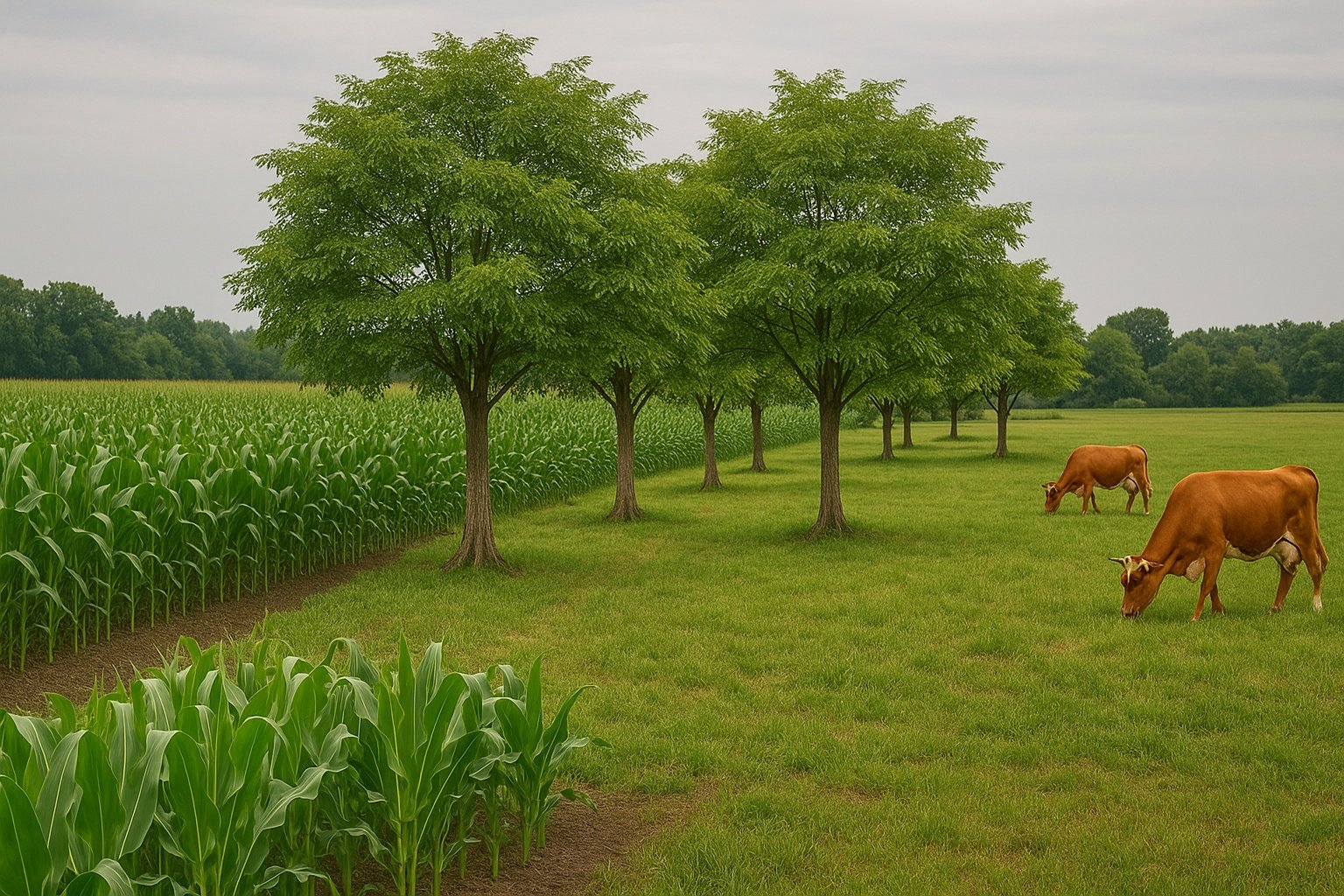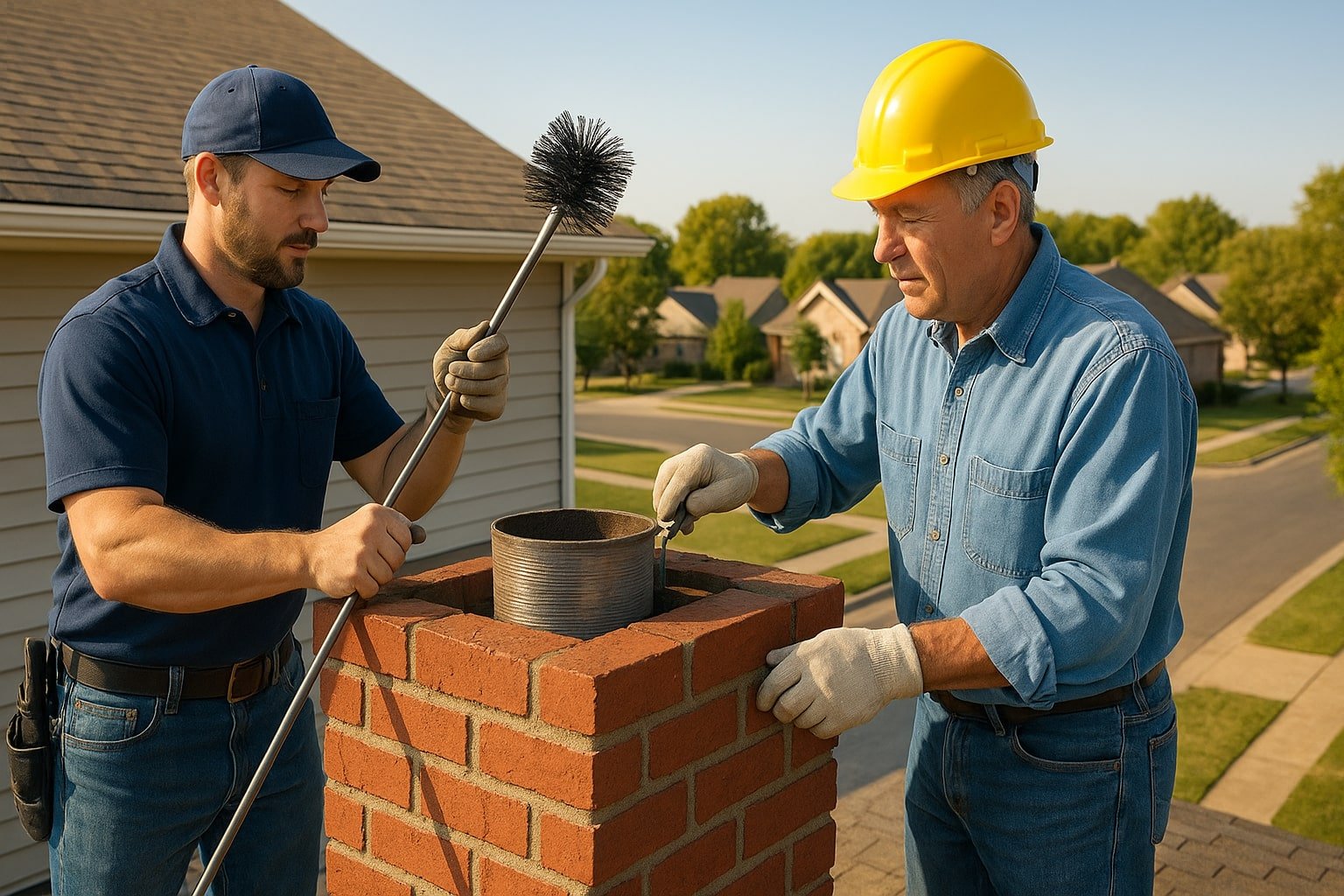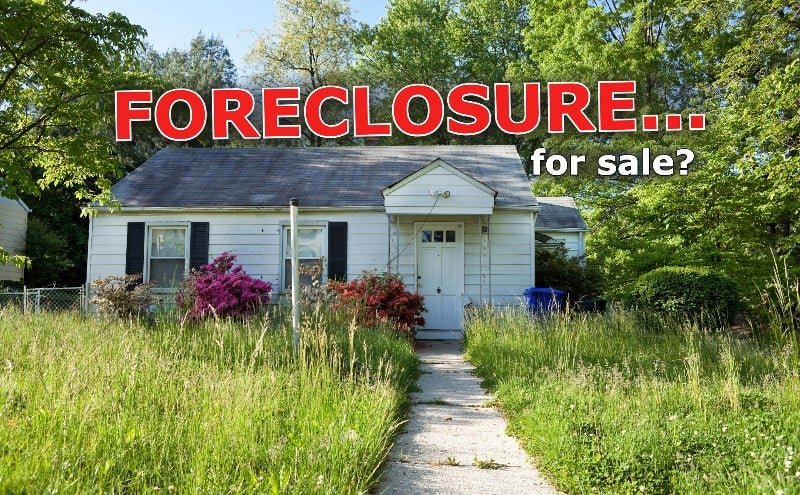How Long Does It Take for a Karanj Tree to Mature Fully?

The Karanj tree (Pongamia pinnata) is a medium-sized, hardy leguminous tree valued for its ecological benefits, medicinal properties, and role in sustainable agriculture. Its ability to restore degraded soils and produce biofuel has gained attention worldwide. Many farmers and environmentalists often ask how long it takes for a Karanj tree to fully mature. The answer requires looking into growth stages, soil conditions, climate, and management practices.
What is the Growth Timeline of a Karanj Tree?
A Karanj tree typically reaches maturity within 8 to 12 years under favorable conditions. During this period, it establishes roots, develops a canopy, and begins consistent seed production. Growth speed depends on soil fertility, rainfall, and care.
- Trees start flowering at 4 to 5 years.
- Full seed yield is achieved after 8 to 10 years.
Karanj trees live for 40 to 60 years, making them a long-term investment for both farmers and ecological projects.
Why Does Climate Influence Karanj Tree Maturity?
Climate plays a decisive role in tree growth. Karanj trees thrive in tropical and subtropical zones with an annual rainfall of 500–2500 mm. In areas with prolonged droughts, tree development slows, extending the time needed to reach maturity. Moderate temperatures between 15–35°C favor optimal growth, while frost-prone zones can damage young plants.
How Do Soil Conditions Affect Maturity Speed?
Karanj trees adapt to different soil types but prefer sandy loam with good drainage. Saline and alkaline soils are also tolerated. Trees in fertile soils with organic content mature faster due to improved nutrient uptake. In contrast, waterlogged or compacted soils restrict root development, delaying seed production.
Organic matter enrichment and intercropping with nitrogen-fixing plants enhance soil fertility, speeding up growth. Farmers practicing mulching and minimal tillage report faster establishment and healthier foliage.
What Role Does Care and Management Play?
Management practices directly influence maturity. Timely weeding, pruning, and soil aeration accelerate growth. Protection from grazing animals during early years is crucial. Regular irrigation during dry months ensures steady growth until the root system becomes self-sufficient.
Tree maturity is not only about physical size but also about consistent flowering and pod production. Proper management ensures both canopy expansion and seed yield within the expected timeframe.
When Does a Karanj Tree Start Producing Seeds?
Karanj trees start producing seeds at around 4 to 5 years. Initial yields remain low but increase significantly after year eight. At full maturity, a single tree can produce 9–90 kg of seeds annually. This variation depends on soil health, climatic stability, and genetic variation.
Farmers interested in sustainable agroforestry often begin plantations by sourcing quality seeds. To secure reliable planting material, many choose to Buy Karanj Seeds from trusted sources that guarantee germination and resilience.
How Does Karanj Compare to Other Agroforestry Trees?
Karanj is often compared with Neem, Mahua, and Jatropha. While Neem takes 10–15 years to mature, Karanj reaches productivity faster. Jatropha matures within 3–5 years but has a shorter lifespan. Mahua requires around 15 years before yielding significantly.
Karanj balances between faster maturity and longer lifespan, making it highly valued for biofuel and soil restoration projects.
What is the Yield Potential of a Mature Karanj Tree?
A fully matured tree can yield between 25–40 kg of seeds per year under average conditions, but superior management practices can increase this yield. The seeds contain 27–39% oil, used for biodiesel and traditional medicine.
The yield potential positions Karanj as a reliable source for renewable energy. According to research from the Indian Council of Forestry Research and Education, biodiesel extracted from Karanj seeds is comparable in efficiency to Jatropha-based fuel.
How Do Farmers Benefit Economically from Mature Trees?
Farmers benefit economically through seed sales, oil extraction, and using by-products as bio-fertilizers. The press cake after oil extraction is nitrogen-rich, making it an organic fertilizer. Shade from mature trees also supports intercropping with pulses and medicinal plants.
A farmer cultivating 100 mature Karanj trees can expect an annual seed yield exceeding 2,000 kg. This provides income from oil production and contributes to soil enrichment for long-term farming.
Which Ecological Benefits Emerge from Tree Maturity?
Mature Karanj trees offer significant ecological services. Their deep roots improve soil structure and prevent erosion. Nitrogen fixation restores fertility to degraded soils, enabling future cultivation. Trees also provide a habitat for pollinators and birds.
Carbon sequestration is another advantage. A 20-year-old tree can capture around 100–150 kg of carbon annually, contributing to climate mitigation.
"A tree that serves both people and planet grows not only in soil but in sustainability."
What Are the Challenges in Growing Karanj to Maturity?
Despite its adaptability, Karanj faces challenges. Young saplings are vulnerable to frost, pests like pod borers, and excessive grazing. Lack of irrigation during extended dry periods delays canopy development.
Disease resistance is generally strong, but fungal attacks in humid regions can affect flowering. Farmers practicing agroforestry must integrate pest management strategies to reduce risks.
How Do Propagation Methods Affect Growth Duration?
Karanj trees can be propagated through seeds, cuttings, or tissue culture. Seed-based propagation is most common but leads to variable growth rates due to genetic diversity. Vegetative propagation ensures uniformity and faster establishment.
Tissue culture techniques, although less widespread, help produce disease-free and fast-growing saplings. Such methods can reduce the time to maturity by up to two years compared to seed-based planting.
Can Agroforestry Practices Shorten Maturity Time?
Yes, intercropping Karanj with legumes and medicinal plants accelerates soil enrichment, leading to faster maturity. Agroforestry reduces competition, diversifies farm income, and improves soil health.
Shaded intercropping systems also regulate soil moisture, ensuring that young Karanj trees develop stronger roots. Agroforestry projects supported by Food and Agriculture Organization highlight Karanj as a sustainable option for degraded lands.
How Do Government Policies Encourage Karanj Cultivation?
Interest in growing Karanj trees has grown as a result of policies supporting biofuels. For instance, biodiesel crops in India are subsidised by government programmes. Farmers receive technical instruction on nursery establishment and plantation maintenance from NGOs and community forest groups.
International initiatives highlight Karanj's contribution to lowering reliance on fossil fuels. World Agroforestry reports demonstrate how incorporating Karanj plantings contributes to the energy independence of rural populations
FAQs
How tall does a Karanj tree grow at maturity?
A mature Karanj tree reaches 15–25 meters in height with a dense, spreading crown.
What is the average lifespan of a Karanj tree?
The average lifespan ranges from 40 to 60 years, depending on environmental factors and management.
Can Karanj trees grow in saline soils?
Yes, Karanj trees tolerate saline and alkaline soils, making them suitable for coastal and degraded lands.
When does a Karanj tree provide maximum oil yield?
Maximum oil yield occurs when trees reach 10–15 years of age, with consistent productivity for decades.
Are Karanj trees suitable for home gardens?
Karanj trees are better suited for farms, wastelands, and agroforestry systems due to their size and extensive root systems.
Where Does the Future of Karanj Cultivation Lead?
More than merely years are shown by the Karanj trees' maturity timeline; it also shows economic potential, ecological resilience, and sustainable futures. Farmers and officials will keep looking into the potential of renewable energy as demand for it increases. The tree is more than just a plantation crop because it provides fuel, shade, and soil health.
A Karanj tree's path from seedling to maturity serves as an illustration of how gradual growth yields enduring benefits. The way that these trees support livelihoods and underpin ecological stability is evident to readers who are interested in sustainable farming.
Comments
You must be logged in to comment.
Latest Articals
-

Business Setup Guide – A Complete Path for Entrepreneurs
Starting a new business is an exciting journey filled with opportunities, but it also comes with challenges that require proper planning and execution. Whether you are a local entrepreneur or an international investor, understanding the essentials of setting up a company is the first step to success. From selecting the right structure to completing documentation, each decision matters in building a strong foundation for your enterprise.Why Business Setup Matters for EntrepreneursMany entrepreneurs find that the process of Business Setup can be overwhelming without proper guidance. Setting up a company is not only about registering a name; it also involves legal requirements, licensing, and compliance with government regulations. Having the right knowledge ensures that your business is launched smoothly and can operate without unnecessary hurdles.Choosing the Right Business StructureOne of the first steps in setting up a company is selecting the right structure. This decision will influence ownership, liability, and how...
-

Apartments for Rent in Dubai – Complete Guide for Tenants
Dubai is one of the fastest-growing cities in the world, attracting people from every corner of the globe. Known for its modern lifestyle, breathtaking architecture, and diverse culture, the city offers countless opportunities for both work and leisure. With millions of expatriates calling Dubai their home, renting an apartment has become the most practical choice for those who want to experience all that the city has to offer without committing to property ownership.Why Choose Renting Over Buying?For many residents, renting is more flexible and convenient compared to purchasing property. This is why demand for apartments for rent in dubai continues to rise every year. Renting gives tenants the freedom to choose from a variety of locations and housing types that suit their budget and lifestyle. Additionally, it allows newcomers to explore different neighborhoods before making a long-term investment in property.Types of Apartments AvailableDubai’s real estate market offers a wide range...
-

Top Colors of Mixed Emotion Hoodie Explained
The Mixed Emotion Hoodie has gained a special place in modern streetwear fashion. One reason for its popularity is the wide range of colors it offers. Each color gives the hoodie a different personality and fits unique style preferences. Streetwear fans love experimenting with shades that match their moods or daily outfits. Colors also add variety, allowing one hoodie design to feel new in different tones. Choosing the right color can make a simple hoodie look bold or calm. Understanding the top colors of Mixed Emotion Hoodie helps fans make better fashion choices.Classic Black Hoodie ChoiceBlack is the most popular color when it comes to the https://mixedemotionstore.com/. It is easy to style because it matches almost every clothing piece in a wardrobe. Many people prefer black because it looks sleek, stylish, and timeless in any setting. It can be worn during day or night while always appearing fashionable and clean....
-

How Tulsa Chimney Liner & Masonry Repair Enhance Safety
Safety at home is more than locks and alarms; it's the unseen foundation that safeguards a residence from harm. Of all of them, the chimney system is most important to directing the smoke, gases, and heat away from the residence safely. Two of the services that are most vital to this protection are chimney liners and masonry repair. Without them, there is a staggering rise in structural failure, risk of fire, and carbon monoxide poisoning. This is why professional masonry and Chimney Liner Tulsa service is necessary.Why Masonry Repair and Chimney Liners need to be a Priority?Chimneys experience hot and cold temperatures, water, and smoke on a daily basis. Over time, the masonry loses strength, and chimney liners rust or shatter, potentially emitting poisons to homes, causing house fires, or compromising the house foundation. Defective chimneys, if not attended to, may admit deadly gases into homes, cause localized house fires,...
-

Why Gas Fireplace Cleaning Tulsa & Chimney Repair Are Important
The safe and efficient operation of your home heating system is largely up to two very important services: regular fireplace cleaning and regular chimney repair. Even though gas fireplaces are easier to maintain than wood fireplaces, they also accumulate dust, dirt, and residue that affect performance. Similarly, cracked or worn chimneys become less efficient and less safe. Neglecting to maintain the services can lead to carbon monoxide poisoning, fire hazard, and wastage of finances. Owners thus should never skip the requirement of Gas Fireplace Cleaning Tulsa.Why gas fireplace cleaning and chimney repair is such a big deal?Fireplaces and chimneys are not decorations; they are heating appliances whose effect is felt directly in indoor air quality and safety. Gas fireplaces, if not maintained, can be plagued by poor ventilation, faulty ignition, or blocked by carbonaceous deposits. Faulty chimneys, however, could vent toxic gases generated inside the building or weaken the building...
-

Best Deals on Foreclosed Homes Near Me in Gwinnett County, GA Affordable Opportunities for Buyers
If you are searching for foreclosed homes near me in Gwinnett County, GA, you are not alone. Many buyers are discovering the advantages of investing in foreclosed properties, which often come at lower prices compared to traditional homes on the market. Whether you are a first-time homebuyer, investor, or simply looking for affordable housing, foreclosed homes for sale near me in Gwinnett County, GA present exciting opportunities.In this guide, we’ll explore what foreclosed homes are, why they are an excellent choice in Gwinnett County, and how you can find the best deals available.What Are Foreclosed Homes?Foreclosure occurs when a homeowner fails to keep up with mortgage payments, and the lender takes back the property. These homes are then put up for sale, often at reduced prices, to recover the loan balance.When you search for foreclosed homes near me in Gwinnett County, GA, you’ll find listings that may include:Bank-owned homes (REO...